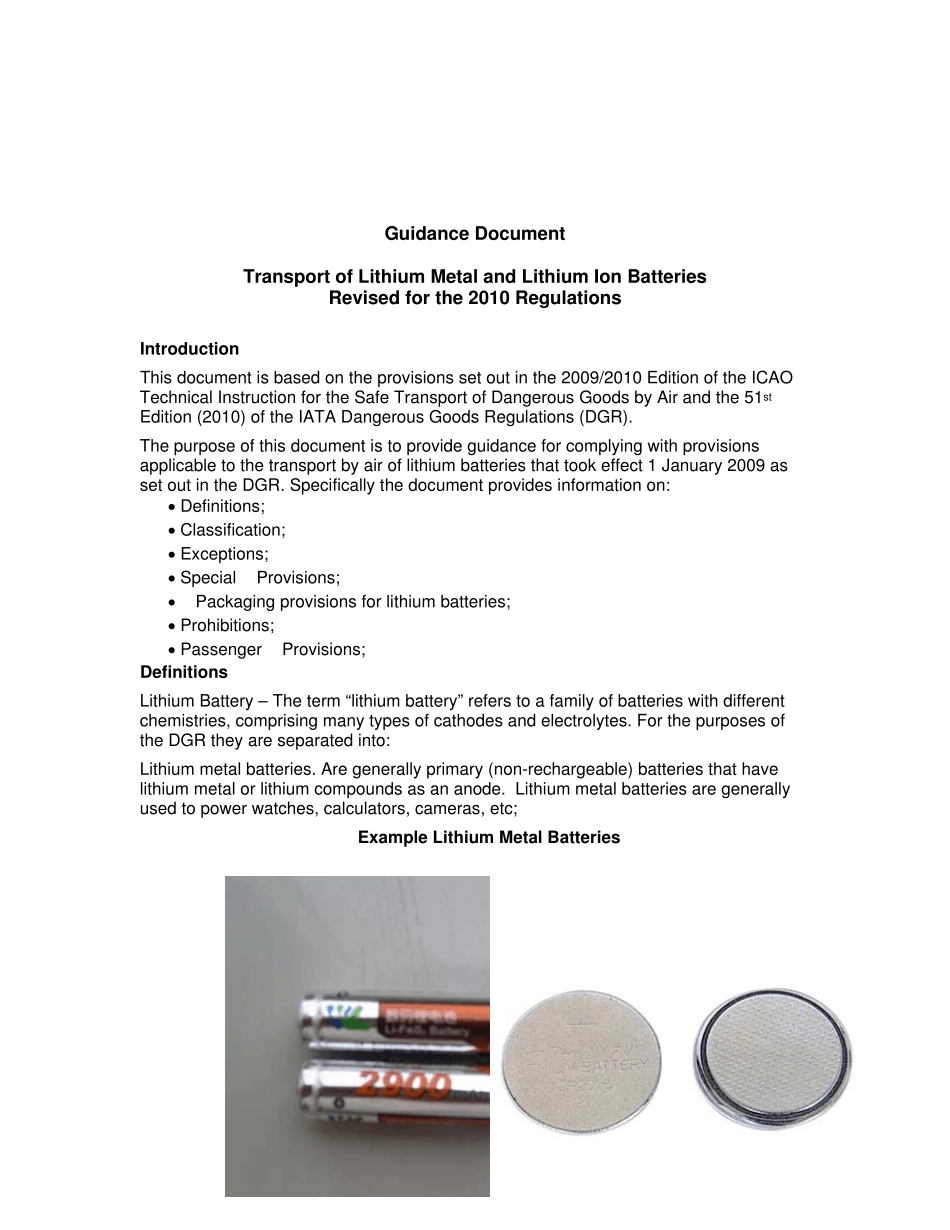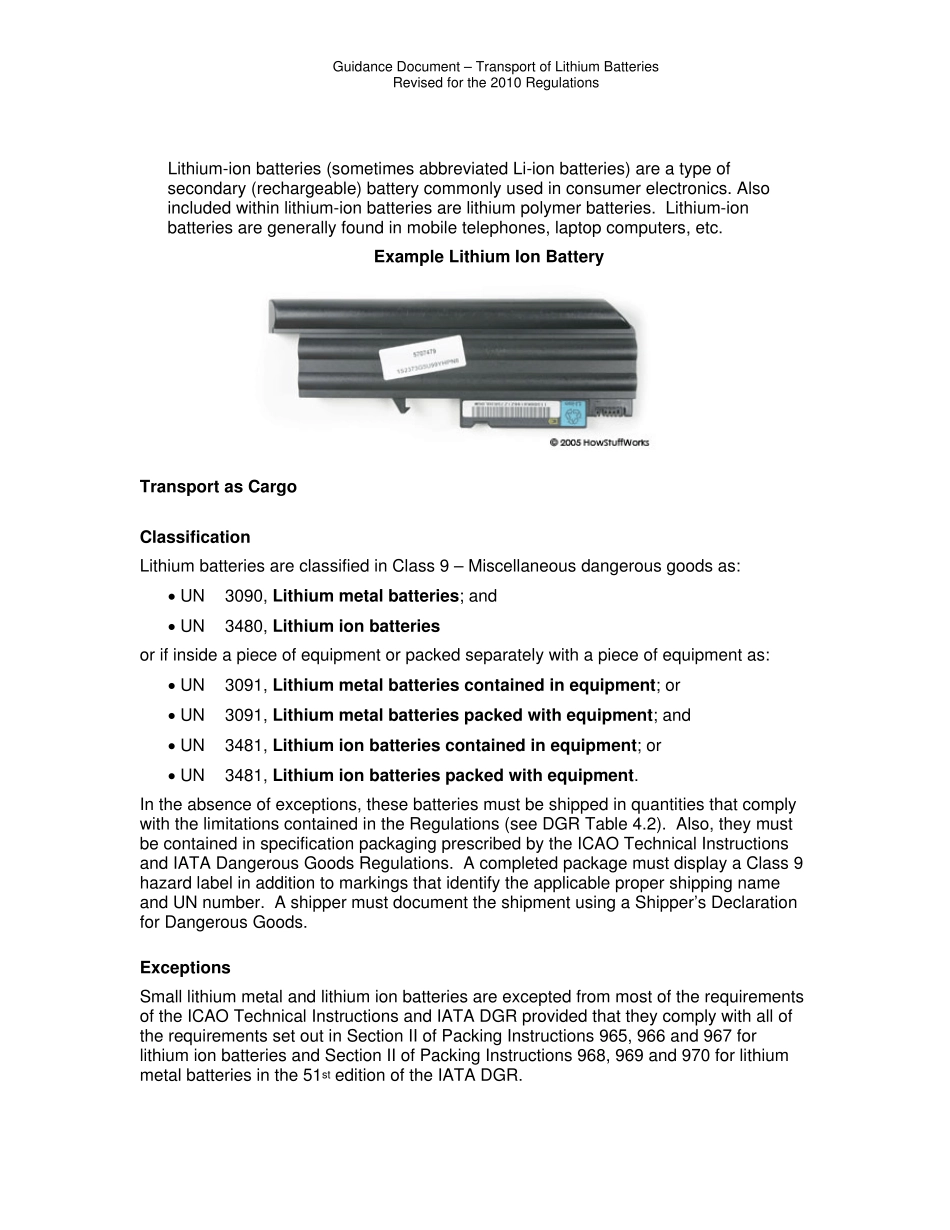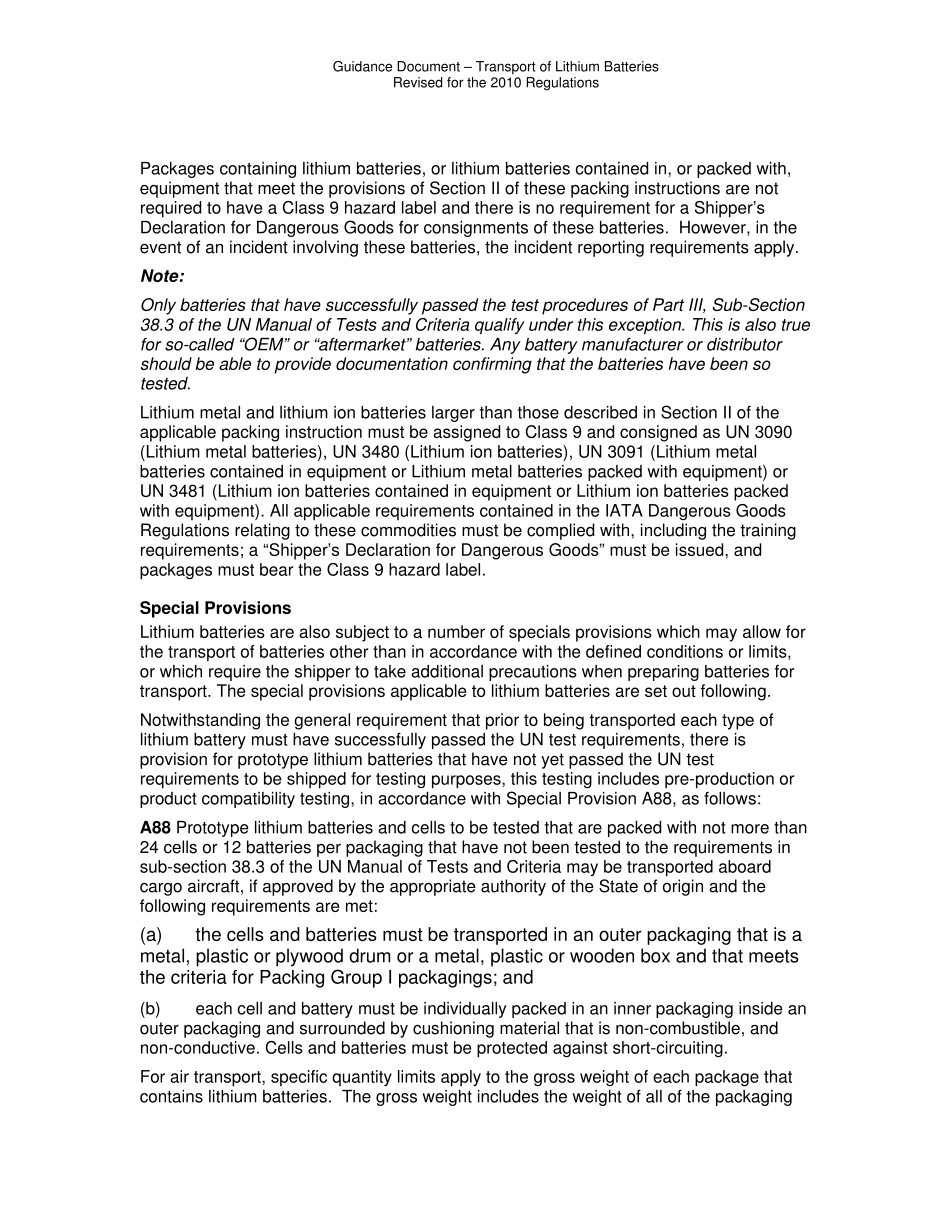Guidance Document Transport of Lithium Metal and Lithium Ion Batteries Revised for the 2010 Regulations Introduction This document is based on the provisions set out in the 2009/2010 Edition of the ICAO Technical Instruction for the Safe Transport of Dangerous Goods by Air and the 51st Edition (2010) of the IATA Dangerous Goods Regulations (DGR). The purpose of this document is to provide guidance for complying with provisions applicable to the transport by air of lithium batteries that took effect 1 January 2009 as set out in the DGR. Specifically the document provides information on: • Definitions; • Classification; • Exceptions; • Special Provisions; • Packaging provisions for lithium batteries; • Prohibitions; • Passenger Provisions; Definitions Lithium Battery – The term “lithium battery” refers to a family of batteries with different chemistries, comprising many types of cathodes and electrolytes. For the purposes of the DGR they are separated into: Lithium metal batteries. Are generally primary (non-rechargeable) batteries that have lithium metal or lithium compounds as an anode. Lithium metal batteries are generally used to power watches, calculators, cameras, etc; Exa mple Lithium Metal Batteries Guidance Document – Transport of Lithium Batteries Revised for the 2010 Regulations Lithium-secondaincludedbatteriesExample Lithium Ion Battery ion batteries (sometimes abbreviated Li-ion batteries) are a type of ry (rechargeable) battery commonly used in consumer electronics. Also within lithium-ion batteries are lithium polymer batteries. Lithium-ion are generally found in mobile telephones, laptop computers, etc. Transport as Cargo Classification are classified in Class 9 – Miscellaneous dangerous goods...


